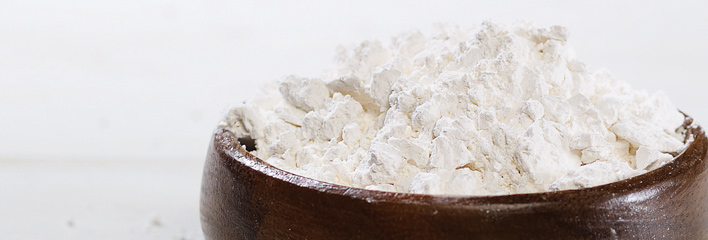Frequently asked questions about FiberFin
I thought corn starch was unhealthy. How can a flour made from corn be so high in fibre?
FiberFin consists of modified corn starch. This is a form of starch that’s resistant to gastric acid, and that isn’t broken down by our digestion enzymes. Resistant starch is not absorbed as energy by the body, but functions as a fibre, which means it regulates blood sugar levels and is beneficial to digestion.
Can I exchange all the flour in a cake with FiberFin?
FiberFin is gluten-free, and as such, it has no binding effect in baked goods. We recommend substituting 10-20 % of the flour to achieve a good result. This will still give you a fibre content that exceeds all other wholegrain flours by far.
Can you use FiberFin as a sauce thickener?
No, FiberFin has no thickening effect.
Is FiberFin the same as psyllium husks?
Psyllium husks are water-soluble fibres that retain moisture and turn into a soft jelly. This serves as a binding agent in baked goods and makes the dough easier to work with. Psyllium husks are beneficial in recipes where a considerable amount of glutenous flour has been substituted, in order to bind the dough together. They should only be used in small amounts (about a tablespoon) and will affect the consistency of the dough. FiberFin is a high-fibre flour supplement, with no binding properties, that doesn’t affect appearance or flavour. By substituting 10-20 % of regular flour with FiberFin, you increase the fibre contents considerably – but the food tastes and looks as if it was made entirely with refined flour.


